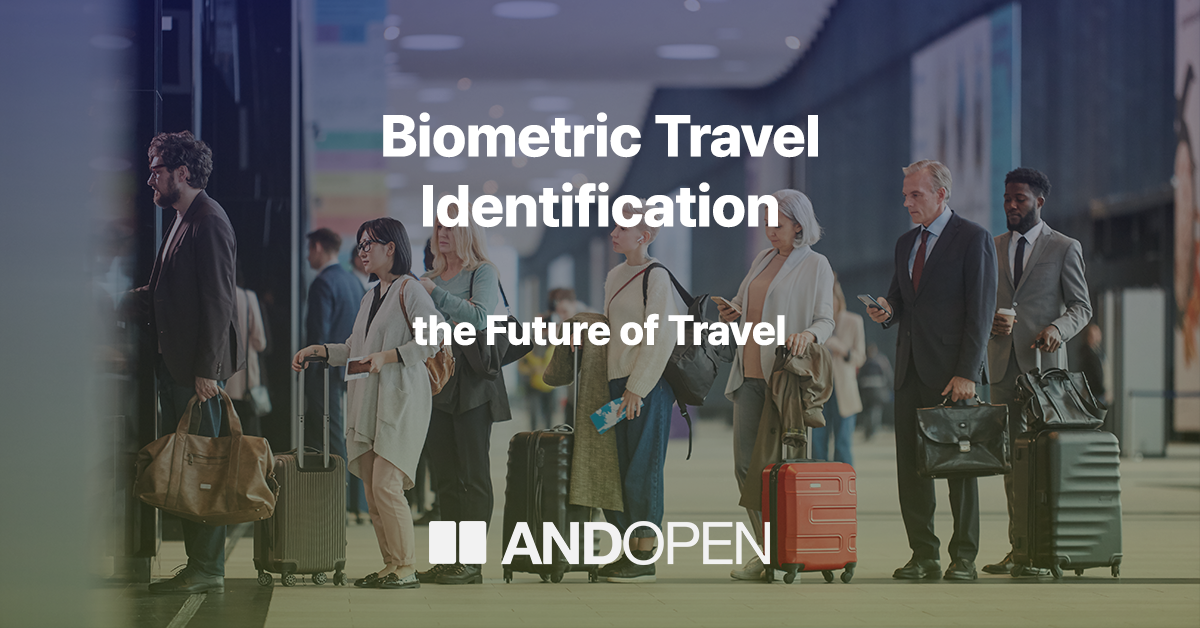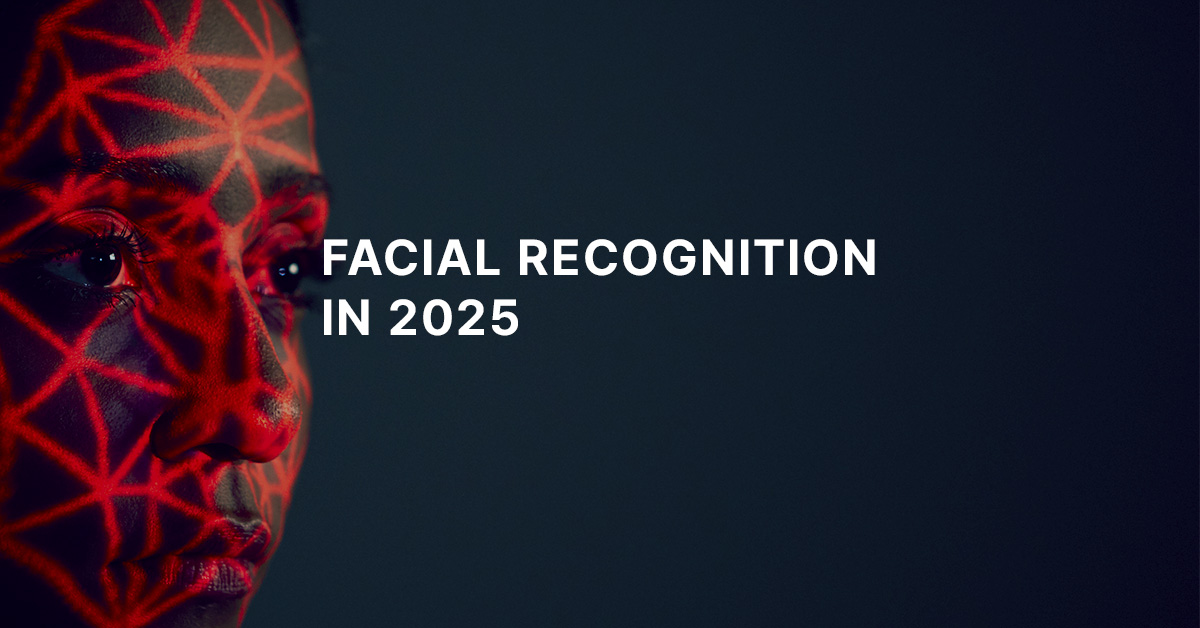
In a groundbreaking development that could transform air travel as we know it, the International Civil Aviation Organization (ICAO) is considering eliminating traditional boarding passes and check-in procedures in favor of a more streamlined, biometric-based approach. This potential shift represents one of the most significant changes to the aviation industry in five decades. It signals a broader transition toward more efficient, secure, and user-friendly travel experiences. However, as with any major technological evolution, concerns about privacy and security remain paramount. Advanced solutions like ANDOPEN’s SNAPPASS demonstrate how next-generation biometric systems can address these concerns while delivering enhanced convenience and security.
The Current State of Biometric Adoption in Aviation
The aviation industry has embraced biometric technology with remarkable speed. According to the 2024 IATA Global Passenger Survey, 46% of passengers used biometrics at airports in 2024, representing a significant leap in adoption. Perhaps more telling is that 73% of travelers now prefer using biometric identification instead of traditional passports and boarding passes.
This preference isn’t merely theoretical – passengers who have experienced biometric systems report 84% satisfaction rates, demonstrating that the technology delivers on its promises of convenience and efficiency. The transformation is particularly evident among younger travelers, with 48% of those under 25 favoring biometrics over traditional methods, compared to 43% of passengers aged 56-75.
Leading Airports Pioneering the Biometric Revolution
Singapore Changi Airport: The Gold Standard
Singapore Changi Airport is setting the global benchmark for biometric implementation. The airport plans to automate 95% of its immigration processing by 2026, with security checks taking as little as 10 seconds. This dramatic reduction from the current industry average of 22.8 seconds per person demonstrates the transformative potential of biometric systems.
Dubai International Airport: Seamless Smart Gates
Dubai International Airport has already implemented biometric smart gates that allow travelers to clear security, immigration, and boarding gates without manual checks. The system represents a complete reimagining of the airport experience, eliminating traditional document verification at multiple touchpoints.
Abu Dhabi’s Zayed International Airport: The World’s First Document-Free Airport
Perhaps most ambitious is Abu Dhabi’s Zayed International Airport, which is implementing the “Smart Travel” project. By 2025, the airport will feature biometric sensors at every security checkpoint, potentially becoming the world’s first fully document-free airport. The system will reduce verification time to approximately seven seconds from the current 25 seconds at regular kiosks.
Global Expansion: From India to Europe
India’s Digi Yatra program has rapidly expanded to cover 29 airports across the country, leveraging the nation’s extensive biometric database to streamline domestic travel. Meanwhile, starting in 2025, the European Union’s Entry/Exit System (EES) will require non-EU travelers to register biometric data, tackling passport fraud and streamlining border crossings.
The Technology Behind the Transformation
Facial Recognition: The Dominant Modality
Facial recognition has emerged as the preferred biometric technology in aviation due to its speed, convenience, and non-intrusive nature. Modern systems map distinct patterns of points on a traveler’s face and compare them to their passport photo or government database in seconds. The technology has achieved remarkable accuracy rates, with top-performing algorithms demonstrating precision exceeding 99.5% under optimal conditions.
Multi-Modal Biometric Systems
While facial recognition dominates, airports are increasingly adopting multi-modal approaches that integrate fingerprint scans, iris recognition, and facial biometrics. This redundancy enhances security while providing fallback options for passengers who may have difficulty with specific biometric modalities, and provides backup methods in case of technical issues.
Advanced AI and Anti-Spoofing Measures
Modern biometric systems incorporate sophisticated AI algorithms capable of detecting spoofing attempts, including deepfakes and presentation attacks. Dual or even triple camera systems with depth perception capabilities ensure reliable operation across varying lighting conditions and demographic differences.
The End of Boarding Passes: A Major Aviation Overhaul
According to recent reports, ICAO, the UN body responsible for establishing airline policies, is contemplating a dramatic transformation of the current air travel experience. This change would effectively eliminate the need for physical boarding passes and traditional check-in procedures—staples of air travel for generations.
The Proposed Digital Travel Credential System
The proposed system would introduce a “digital travel credential” enabling passengers to upload their passport information directly to their smartphones. Instead of presenting boarding passes at various checkpoints throughout the airport, travelers would simply use their faces as verification.
This new approach would function through a “journey pass” that passengers download to their phones when booking flights. This pass would contain all booking details and any additional services purchased, automatically updating if changes are made to the reservation.
The process would eliminate several friction points in the current travel experience:
- Passengers with checked luggage would walk directly to bag drop areas where facial recognition would verify their identity
- Travelers with only carry-on baggage would proceed straight to security, where facial scanning would grant them access
- The traditional check-in process, whether online or at airport counters, would become obsolete
Valerie Viale from Amadeus, the world’s largest travel technology company, characterized this shift as the most significant advancement since the adoption of e-ticketing in the early 2000s, noting that “The industry has now decided it’s time to upgrade to modern systems that are more like what Amazon would use”.
Privacy and Regulatory Considerations
European Data Protection Framework
The European Data Protection Board (EDPB) has issued comprehensive guidance on biometric use in airports, emphasizing that individuals should have maximum control over their biometric data. Under GDPR, biometric systems must meet strict requirements:
- Biometric templates should remain in the individual’s possession or be stored centrally with encryption keys held solely by the passenger
- Processing must be limited to what is strictly necessary and proportionate
- Explicit consent and secure storage measures are mandatory
United States Regulatory Landscape
In the United States, the Department of Homeland Security has implemented policies ensuring biometric data is encrypted and retained only for limited periods. However, privacy concerns persist, with nearly 80% of U.S. travelers supporting the technology despite acknowledging privacy risks. The TSA emphasizes that under normal operating conditions, facial recognition technology deletes traveler data and images immediately after identity verification.
Global Privacy Standards
Organizations worldwide are implementing privacy-by-design principles, with systems designed to minimize data collection and maximize user control. The challenge lies in balancing security needs with privacy requirements while maintaining interoperability across different jurisdictions and systems.
Challenges and Implementation Hurdles
Technical Integration Complexity
Implementing biometric systems across existing airport infrastructure presents significant challenges. Integration complexity with legacy access control, security, and border protection systems requires careful planning and substantial investment. Smaller airports may find it particularly difficult to justify the costs of comprehensive biometric upgrades.
Accuracy and Bias Concerns
While biometric accuracy has improved dramatically, challenges remain with varying lighting conditions and demographic differences. Facial recognition systems have shown higher error rates for certain demographic groups, with false match rates being 10 to 100 times higher for Black individuals compared to White individuals. The industry continues working to address these algorithmic biases through improved training data and system refinements.
Cost and Infrastructure Requirements
The total cost of ownership for biometric systems encompasses implementation, enrollment, field devices, data security, and ongoing maintenance. Piloting and testing biometric products can be costly and may create procurement challenges, particularly for smaller airports with limited budgets.
The Path Forward: Digital Travel Credentials
The next evolution in biometric travel involves Digital Travel Credentials (DTCs) – digital representations of travelers’ identities that can replace physical passports. ICAO has defined three types of DTCs:
- Type 1: Generated by travelers from their e-passport via mobile devices
- Type 2: Issued by passport authorities with additional cryptographic components
- Type 3: Independently issued digital credentials stored on personal devices
DTCs promise to enable truly paperless travel experiences while maintaining security standards equivalent to traditional passports. Early pilots, including programs in the Netherlands, have demonstrated the potential for seamless, pre-authenticated travel experiences.
The Future of Identity Verification
As biometric technology continues to evolve, the focus must remain on solutions that balance convenience, security, and privacy. The coming transformation of air travel represents just one application of a broader shift toward more intelligent, user-centric approaches to identity verification.
The most successful solutions will be those that:
- Put users in control of their own biometric data
- Minimize network dependencies and centralized data storage
- Incorporate advanced AI to prevent increasingly sophisticated fraud attempts
- Deliver frictionless experiences without compromising security
- Adapt to evolving privacy regulations across jurisdictions
How SNAPPASS Addresses Biometric Travel Challenges
As the biometric travel revolution unfolds, solutions like SNAPPASS by ANDOPEN are emerging to address key privacy and security concerns that have hindered wider adoption. SNAPPASS represents a paradigm shift in biometric authentication by storing biometric data directly on SNAPPIN cards rather than in centralized databases, giving users complete control over their personal information.
Privacy-First Architecture
Unlike traditional biometric systems that store sensitive data in centralized servers, SNAPPASS encrypts biometric templates using military-grade encryption and stores them locally on physical cards. This approach eliminates the risk of large-scale data breaches while ensuring compliance with stringent privacy regulations like GDPR.
Network-Free Operation
SNAPPASS operates without requiring network connectivity, making it ideal for remote locations and air-gapped environments common in secure airport facilities. This network-free architecture addresses one of the major implementation challenges faced by airports in integrating biometric systems with existing infrastructure.
Universal Compatibility
The system is designed to work harmoniously with existing security systems and international standards, supporting seamless integration across different airports and jurisdictions. This compatibility is crucial as the industry moves toward globally interoperable biometric travel systems.
Enhanced Security Features
SNAPPASS incorporates advanced AI algorithms for deepfake detection and anti-spoofing measures, positioning it ahead of emerging security threats. The system’s triple camera array with HDR capabilities ensures reliable operation across varying lighting conditions and diverse passenger demographics.
For the aviation industry, SNAPPASS offers a solution that addresses the core concerns hindering biometric adoption – privacy, security, and interoperability – while delivering the seamless passenger experience that modern travelers demand.
How Secure Biometrics Transforms the Identity Verification Experience
SNAPPASS represents a fundamental rethinking of how biometric authentication can work in high-security environments. By combining the security benefits of facial recognition with the user control inherent in card-based systems, ANDOPEN has created a solution that addresses the key concerns surrounding biometric verification.
For travelers navigating the coming transformation of airport experiences, technologies like SNAPPASS offer a glimpse of how convenience and privacy can coexist. Rather than forcing users to choose between security and personal data sovereignty, next-generation solutions enable both simultaneously.
The convergence of facial recognition with physical credentials creates a two-factor authentication system that is both more secure and more respectful of individual privacy than either approach alone. As airports and airlines implement new biometric systems, looking to solutions that prioritize user data control and offline verification capabilities will be essential to building public trust and ensuring widespread adoption.
By keeping biometric data with users rather than in centralized databases, ensuring verification occurs without network dependencies, and providing robust protection against increasingly sophisticated fraud attempts, SNAPPASS demonstrates how the future of identity verification can be both more convenient and more secure than current approaches.
Fly into the future with ANDOPEN
